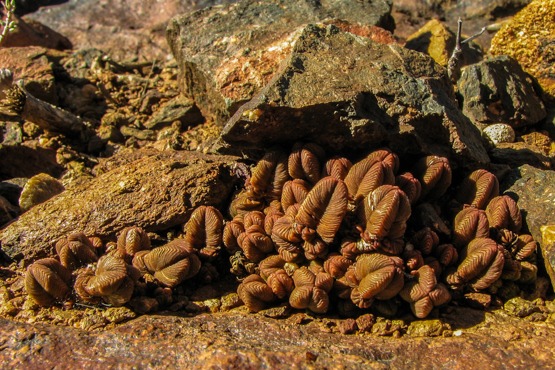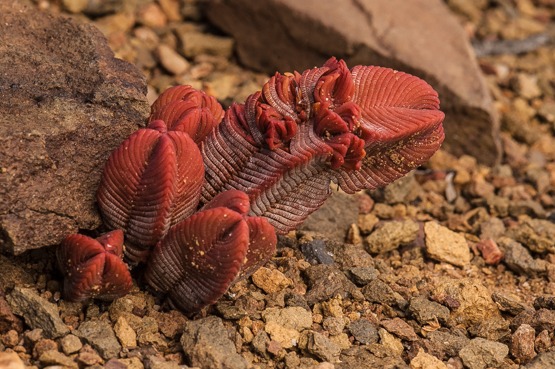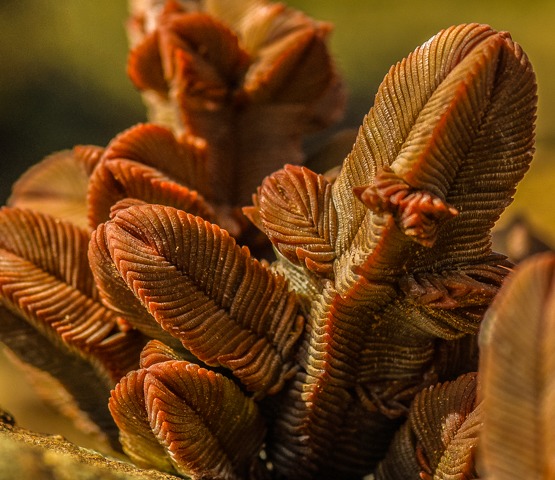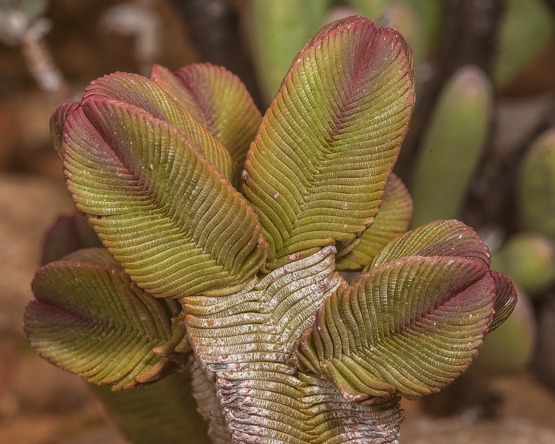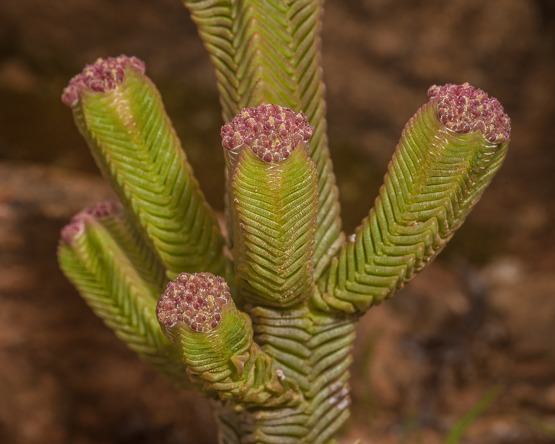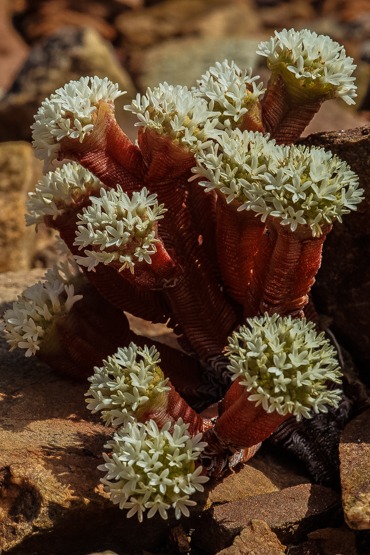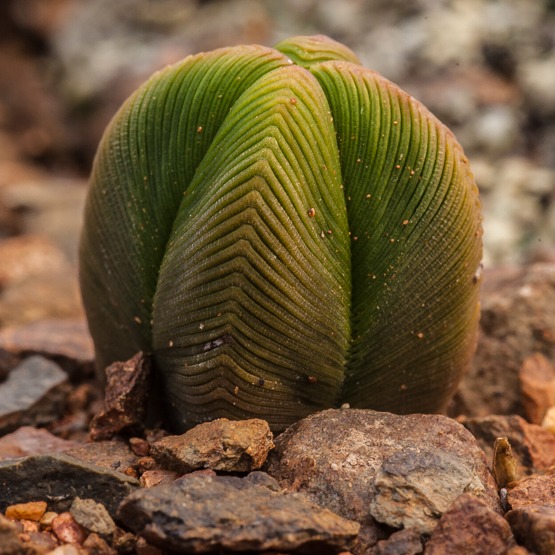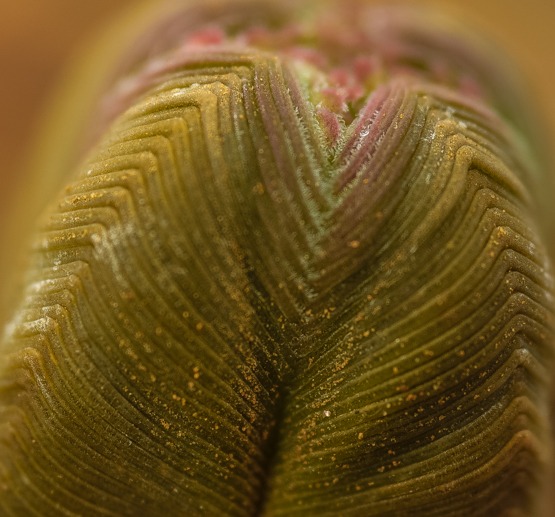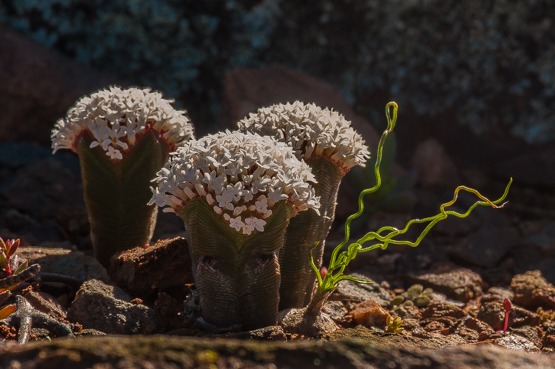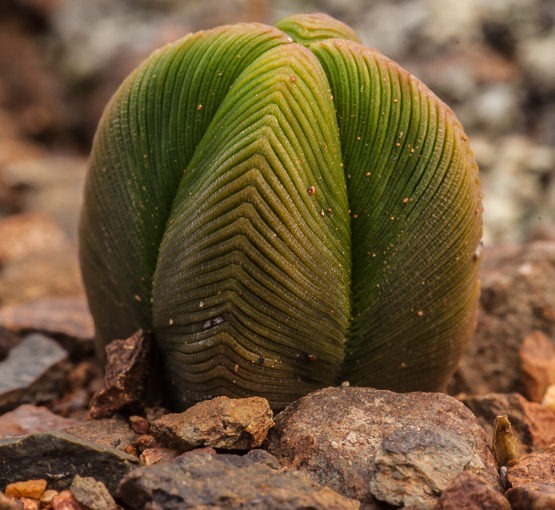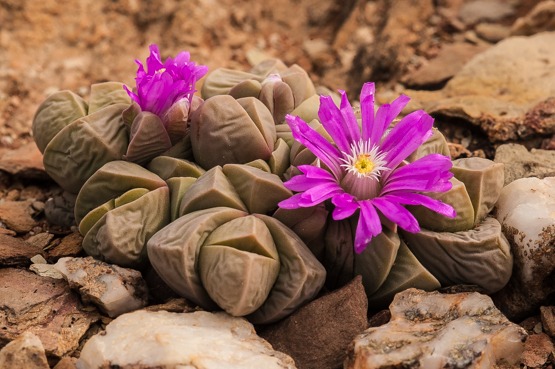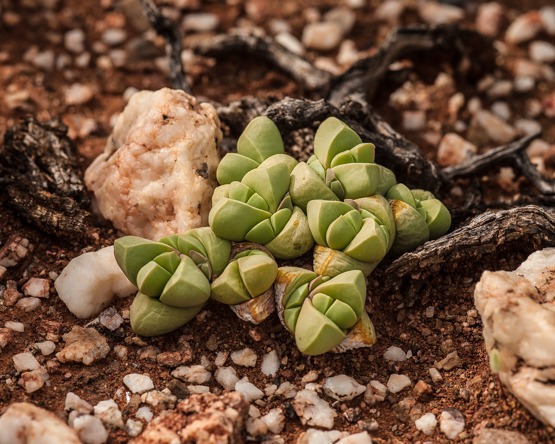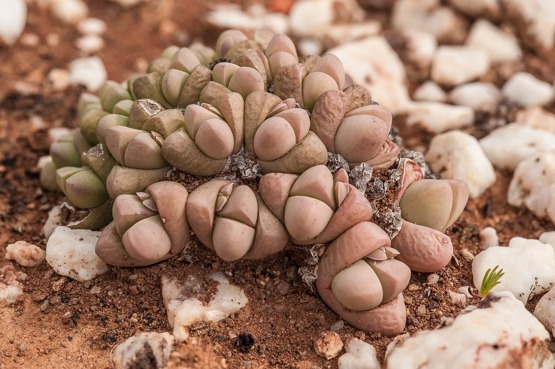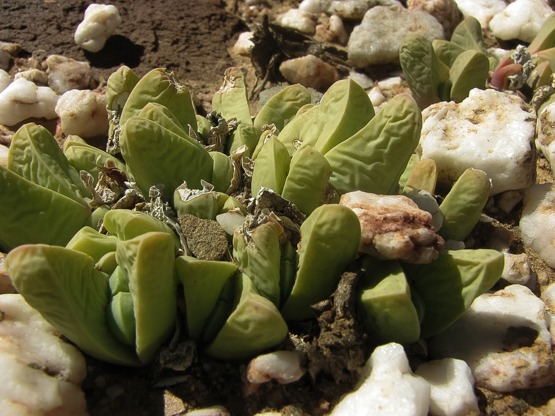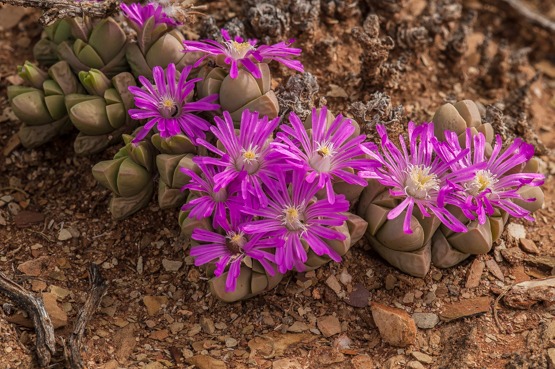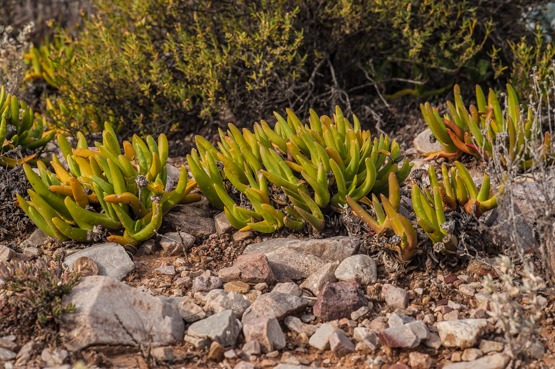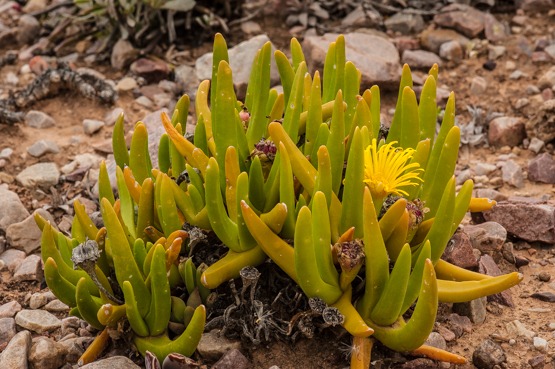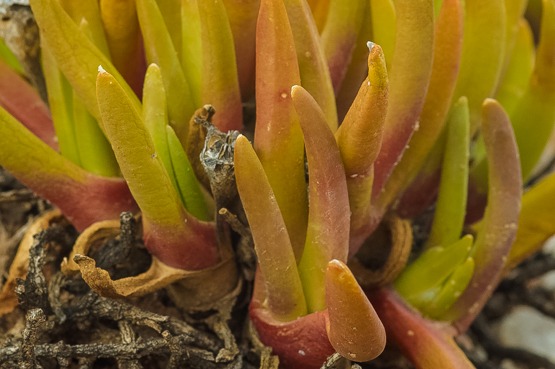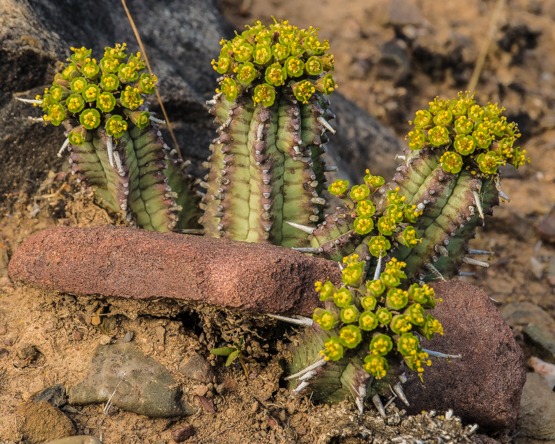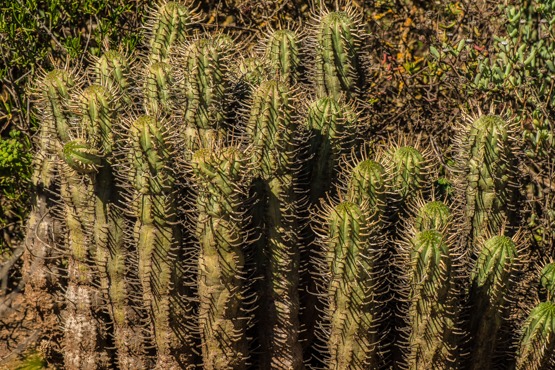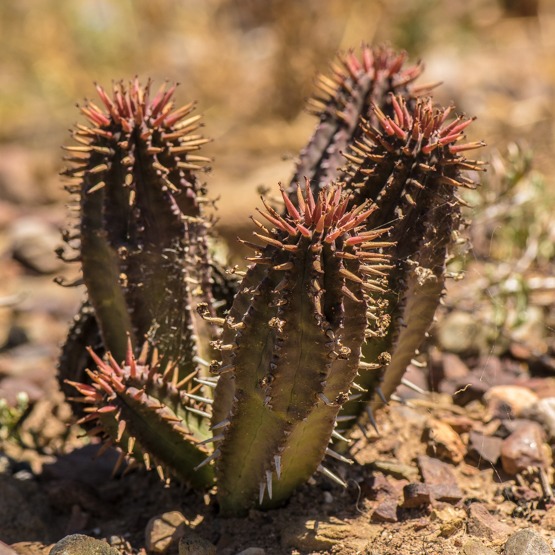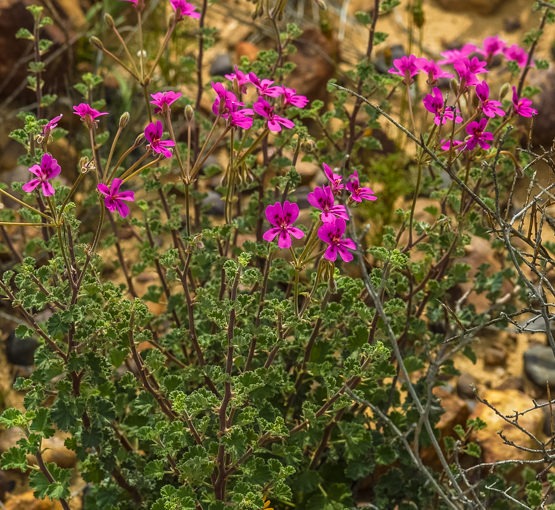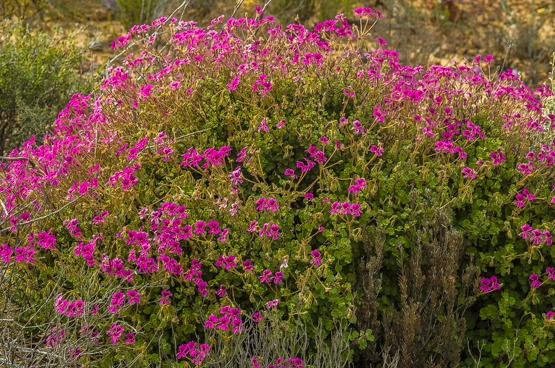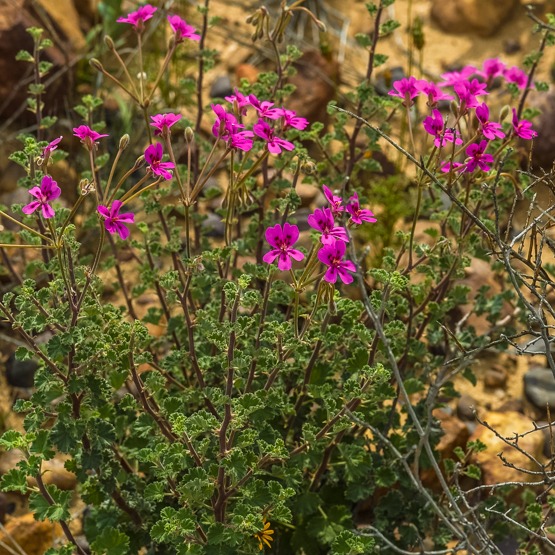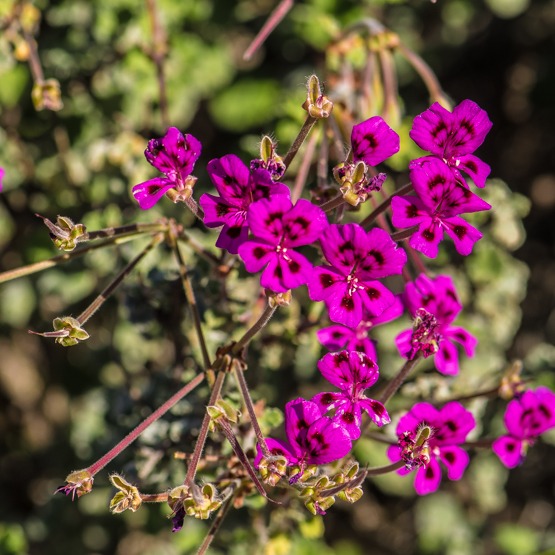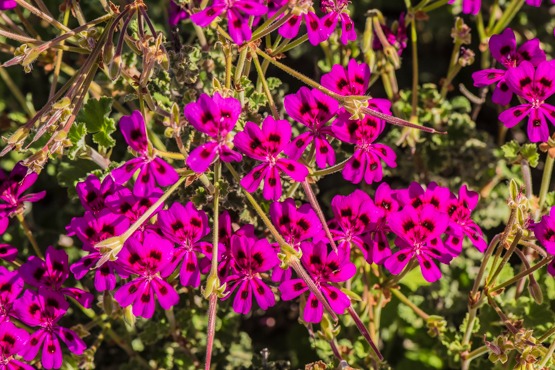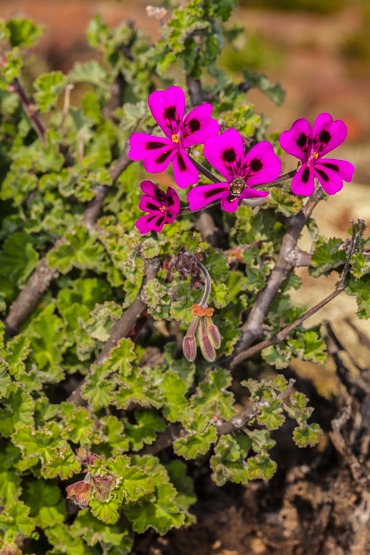Although this species is widespread from the southern Great Karoo and the Montagu area to Somerset East, it is rarely common. It most often grows in shallow soil on rocky outcrops, on gravelly slopes and in crevices; usually on a north/north-east facing aspect.
As the pictures show, the plants are very variable.
Most often, the stems are erect, only rarely decumbent*. They are completely covered by the leaves, which are arranged in four neat ranks so that a quadrangular column is formed. This may be 0.6-2 cm in diameter and up to 25 cm tall (usually much shorter). Once a stem has flowered, it dies back, but new ones are formed at the base.
The leaves are green to grey-green or reddish-brown and the flowers white or cream-coloured.
Flowering time is spring: Aug.-Oct.
* creeping on the ground with the tips raised.
Synonyms: C. quadrangula, C. cylindrica, C. archeri.
